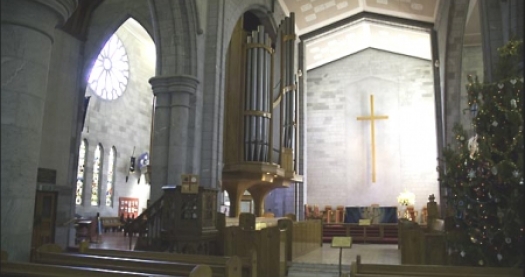Whangarei
17.89°C

Whangarei
17.89°C

Waitakere City
16.98°C

Manukau City
17.11°C

Papakura
24.46°C

Hauraki
17.26°C

Waikato
17.67°C

Matamata
18.46°C

Hamilton
17.51°C

Otorohanga
18.52°C

Rotorua
16.6°C

Taupo
15.44°C

Tauranga
19.27°C

Kawerau
18.6°C

Whakatane
19.64°C

Gisborne
15.51°C

New Plymouth
16.98°C

Stratford
8.97°C

Ruapehu
14°C

Wanganui
17°C

Palmerston North
16.41°C

Wairoa
19.19°C

Hastings
18.84°C

Napier
18.49°C

Masterton
15.49°C

Carterton
15.66°C

Porirua
15.99°C

Lower Hutt
16.45°C

Wellington
15.79°C

Tasman
9.35°C

Nelson
16.27°C

Marlborough
3.22°C

Kaikoura
15.48°C

Christchurch
12.59°C

Ashburton
12.52°C

Timaru
13.37°C

Waitaki
11.32°C

Waimate
13.08°C

Queenstown
12.38°C

Dunedin
14.33°C

Southland
9.98°C

Gore
11.31°C

Invercargill
12.06°C

Blenheim
14.73°C

Te Anau
27.35°C

Wanaka
11.17°C

Kaikoura
13.38°C

Stratford
13.54°C

Upper Hutt
15.9°C

About
The actual name of the Cathedral is Christ Church Cathedral, The original Cathedral was a parish church – Christ Church.
Services have been held on Church Hill or Piki Mai,since 1842.
In 1859 Queen Victoria created the Diocese of Nelson by Royal Charter. As a result Nelson became a city. The Church and the city have maintained a close relationship to the present day.
From 1859 to 1889 Christ Church was the unofficial Cathedral of the Diocese. In 1889 that church was enlarged and opened as the Cathedral Church of the Diocese of Nelson.
For nearly 180 years there has been a church of sorts on the same site. The current cathedral is the fifth structure to house services on church hill, a former pa site known as Piki mai, which roughly translates as “come hither, up here”. To date none of these churches have been completed as originally designed.
By 1916 the cathedral was in a poor state of repair and the spire and tower were removed. A fire did further damage in 1920 and it was decided that a new cathedral was needed.
Frank Peck was commissioned to design the new cathedral. Another Nelson architectural firm, Houlker and Duke, provided a design for the cathedral but theirs was not successful.
Peck was an English architect from Lincolnshire and who was trained by Sir Aston Webb. He emigrated to Nelson in 1915 where we prepared designs for a number of churches, including Wellington’s St Paul’s pro-Cathedral (the design for which received praise by his former employer Sir Aston Webb and Sir Gilbert Scott, but were not built) and St Marks Church near the Basin Reserve in Wellington, Alexandra Homes in Palmerston North and Nelson and the Presbyterian church in Motueka. He also designed 5 Ronaki Terrace, near Nelson College, a fine Arts and Crafts house.
The design of the cathedral was magnificent. Also in the Early English style, the foundation stone was laid on 5 August 1925. The cathedral was to have a cruciform plan, like Thatcher’s but of reinforced concrete lined with Takaka marble. The drawings show the south elevation with a tall, steeply pitched gable including a rose window, tourelles and gabled buttresses. Under the rose window are triple gables, the central gable being the main entrance with engaged columns, hood moulds (also called label stops) with masques representing the King, Bishops Selwyn and Patterson and Archbishop Averill, and gargoyles at the junctions of the gables. The entrance doors have shouldered arches with further masques as corbels representing Bishops Hobhouse, Sadlier, Suter and Mules.
The transepts were to be of the same height as the nave and also have a rose window, tourelles, stepped buttresses quadruple lancet arched windows. A lofty octagonal spire with small and large lucarnes at the crossing was to be supported by a square planned tower with gables to each elevation, presumably to house bells, octagonal tourelles and double arched, louvred openings. The chancel was to have a polygonal apse, more flying buttresses with gablets, and a semi-circular vestry to the east and a semicircular morning chapel to the west both with conical roofs. It would have been a truly beath-taking building worthy of the site.
However, the cost of the building, the lack of trained stone masons, the Depression and the additional strength requirements for buildings after the 1931 Napier earthquake saw the building stop at the nave but without the soaring roof. Instead the walls were completed up to the beginning of the triforium level and a nearly flat roof installed over the nave, with just the steeply sloping timber ceiling of the aisles completed.
The interior elements that were completed include large round columns in the nave with stepped capitals supporting an arcade along the nave and arches over the aisles. Alternate columns have dog tooth decoration, and this from of decoration can also be seen in the mouldings over the main door. There are corbels at the junction of the arches, decorated with leaves. There are pairs of engaged columns at each end of the nave.
All work stopped in 1932 and the partially completed building was opened by Governor-General Lord Bledisloe in 1933.
The Mountfort timber chancel was added to the north end of the incomplete church.
Following the end of WWII it was decided to complete the cathedral but not to Peck’s design. A Wellington architect, Ron Muston, a partner with Structon, was selected to design the new extension. Muston trained at the Auckland Architecture School and established his own firm in 1939 in Wellington. He became a partner in Structon an architectural practice in Lower Hutt where he designed a number the civic building as well as St James church in 1953 for which he won a gold medal from the NZIA. This church was a remarkable Modern Movement design with stepped, rectangular forms, large areas of glass and a starkly simple, off centre, bell tower facing the street.
Muston followed the general floor plan that Peck had designed but with rectangular transepts, chancel, vestry and chapel on opposite sides. Choir rooms, kitchen, offices and toilets. are located in the same location as the polygonal apse. Instead of Takaka marble, reinforced concrete coloured to look like marble was used. The tower was located in the centre of the elevation, unlike St James, and unlike either the Modern Movement or the Gothic style.
The original design mirrored St James Lower Hutt as a simple, Modern Movement design, with a similar tower to St James but in the centre of the north elevation. The vestries, chapel and robing room are clearly articulated rectangular forms. The Modern Movement design was not acceptable. It had to be Gothicised, and who better to redesign the openings (everything else remained the same) but Ian (later Sir) Athfield who was working at Structon at the time. He found the exercise somewhat frustrating which is understandable given his post-modern sensibilities revealed in his extensive portfolio of later work.
Some of the rectangular windows became simple lancets and the tower was Gothicised with shallow arched mouldings, similar to Early English Gothic, and simple tracery. The roofs of these lower spaces are flat with the nave transept roofs nearly flat. A nearly flat roof in a Gothic church is typical of Perpendicular Gothic which does not sit well with the Early English style of Peck’s original. The ceilings are lined with pink or white acoustic tiles with leaf and fleur-de-lis patterns.
The completed building was opened by Governor-General, Sir Bernard Fergusson, in 1967. At the time the Nelson press was not happy with the compromised design suggesting that the church was settling for second best.
Other changes have happened since the cathedral was opened. The narthex was redesigned, a new organ case and stand were installed, and the chapel now has stained glass windows.
